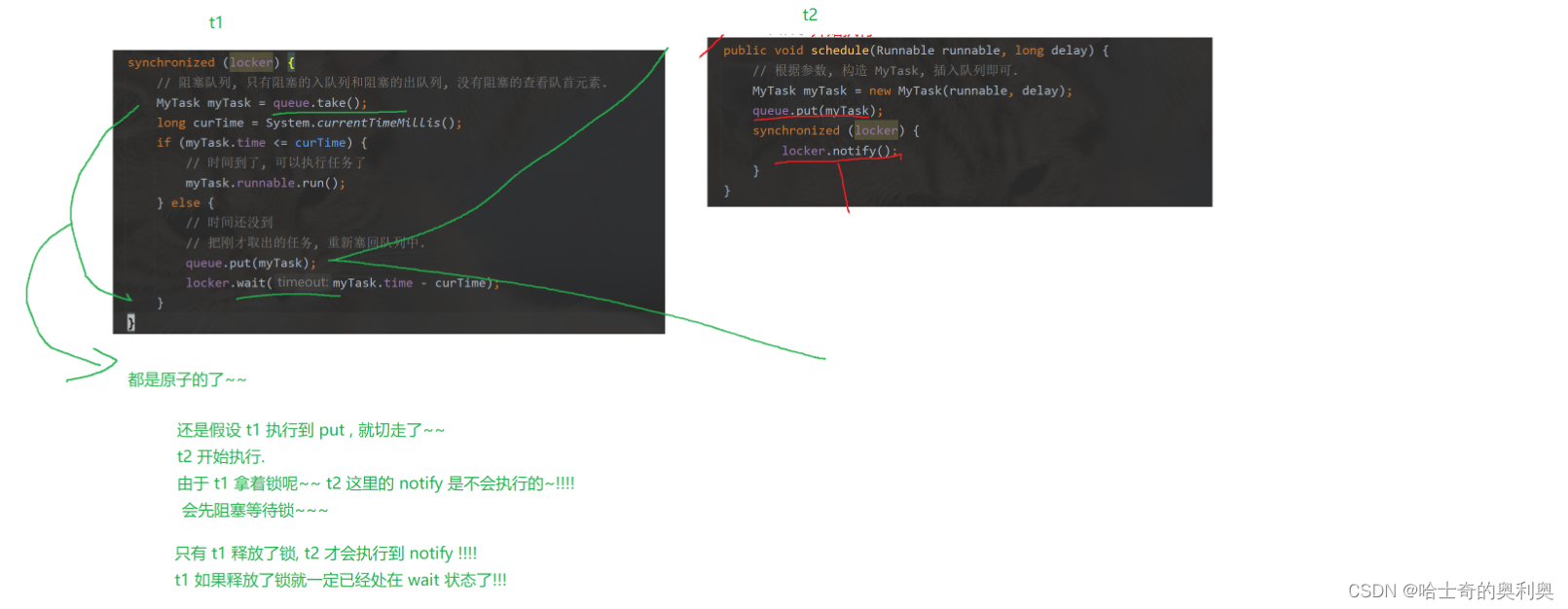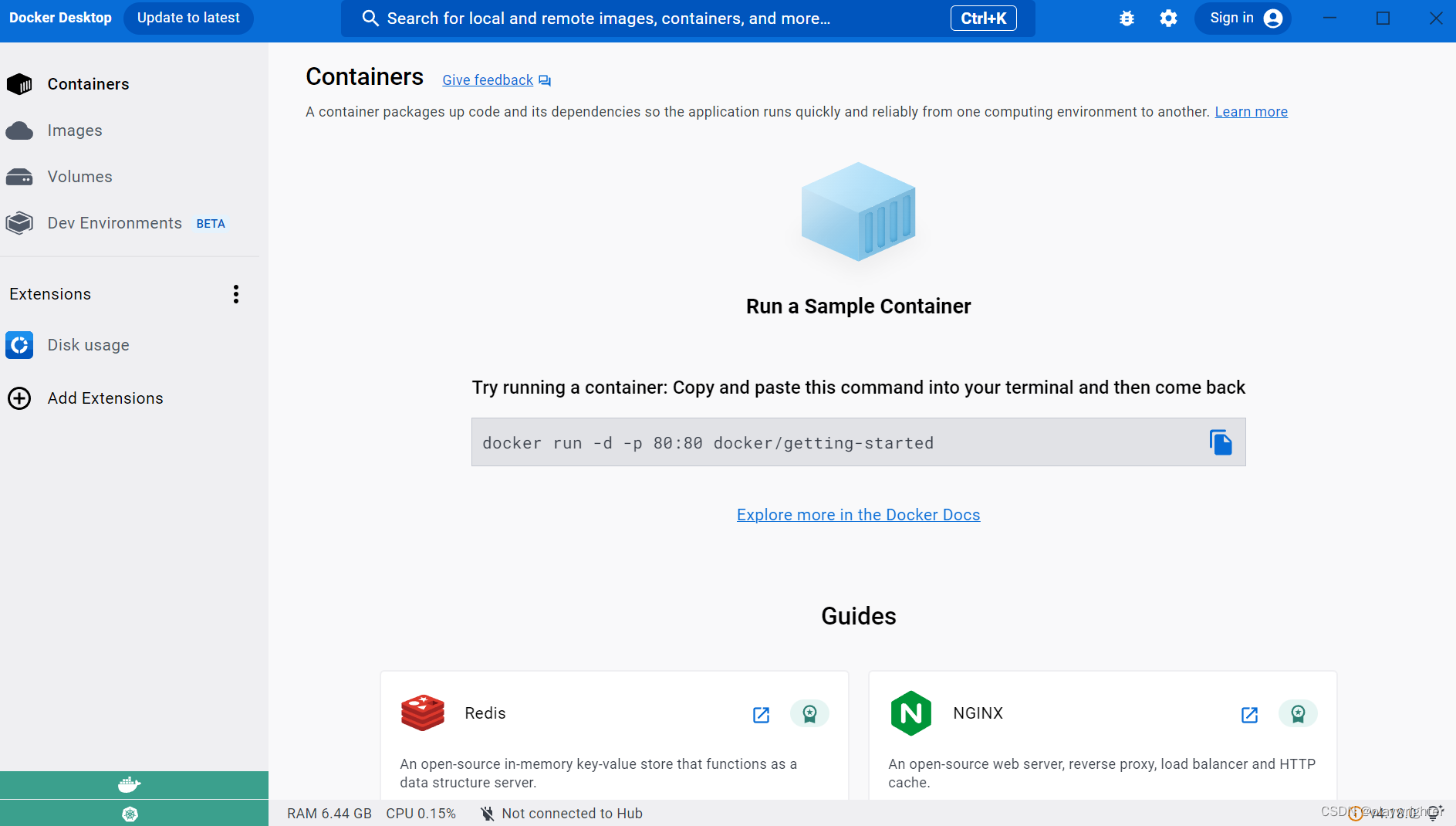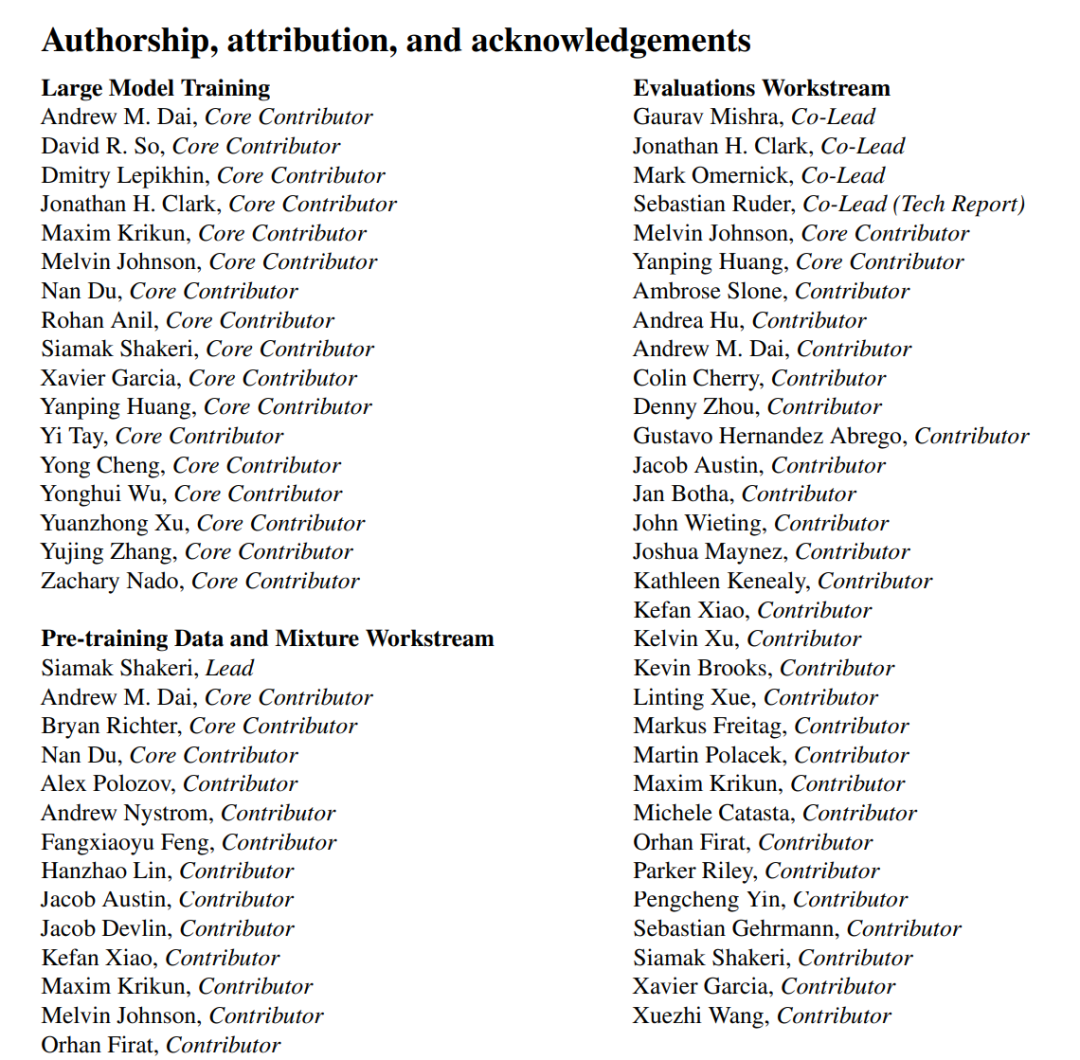文章目录
- 一、RetinaNet原理
- 二、RetinaNet实现
- 1. tf.train.CheckPoint简介
- 2. RetinaNet的TensorFlow源码
一、RetinaNet原理

待补充
二、RetinaNet实现
1. tf.train.CheckPoint简介
待补充
2. RetinaNet的TensorFlow源码
Step 1:安装Tensorflow 2 Object Detection API及相关包
# 删除models文件夹下所有文件
!rm -rf ./models/
# 拷贝Tensorflow Model Garden
!git clone --depth 1 https://github.com/tensorflow/models/
# 编译Object Detection API protocol buffers
!cd models/research/ && protoc object_detection/protos/*.proto --python_out=.%%writefile models/research/setup.py
import os
from setuptools import find_packages
from setuptools import setupREQUIRED_PACKAGES = ['tf-models-official==2.8.0','tensorflow_io==0.24.0','numpy==1.21.5'
]setup(name='object_detection',version='0.1',install_requires=REQUIRED_PACKAGES,include_package_data=True,packages=([p for p in find_packages() if p.startswith('object_detection')] +find_packages(where=os.path.join('.', 'slim'))),package_dir={'datasets': os.path.join('slim', 'datasets'),'nets': os.path.join('slim', 'nets'),'preprocessing': os.path.join('slim', 'preprocessing'),'deployment': os.path.join('slim', 'deployment'),'scripts': os.path.join('slim', 'scripts'),},description='Tensorflow Object Detection Library',python_requires='>3.6',
)# Run the setup script you just wrote
!python -m pip install models/research
Step 2:导入包
import matplotlib
import matplotlib.pyplot as pltimport os
import random
import io
import imageio
import glob
import scipy.misc
import numpy as np
from six import BytesIO
from PIL import Image, ImageDraw, ImageFont
from IPython.display import display, Javascript
from IPython.display import Image as IPyImageimport tensorflow as tffrom object_detection.utils import label_map_util
from object_detection.utils import config_util
from object_detection.utils import visualization_utils as viz_utils
from object_detection.utils import colab_utils
from object_detection.builders import model_builder%matplotlib inline
Step 3:图片加载&画图工具函数定义
def load_image_into_numpy_array(path):"""Load an image from file into a numpy array.Puts image into numpy array to feed into tensorflow graph.Note that by convention we put it into a numpy array with shape(height, width, channels), where channels=3 for RGB.Args:path: a file path.Returns:uint8 numpy array with shape (img_height, img_width, 3)"""img_data = tf.io.gfile.GFile(path, 'rb').read()image = Image.open(BytesIO(img_data))(im_width, im_height) = image.sizereturn np.array(image.getdata()).reshape((im_height, im_width, 3)).astype(np.uint8)def plot_detections(image_np,boxes,classes,scores,category_index,figsize=(12, 16),image_name=None):"""Wrapper function to visualize detections.Args:image_np: uint8 numpy array with shape (img_height, img_width, 3)boxes: a numpy array of shape [N, 4]classes: a numpy array of shape [N]. Note that class indices are 1-based,and match the keys in the label map.scores: a numpy array of shape [N] or None. If scores=None, thenthis function assumes that the boxes to be plotted are groundtruthboxes and plot all boxes as black with no classes or scores.category_index: a dict containing category dictionaries (each holdingcategory index `id` and category name `name`) keyed by category indices.figsize: size for the figure.image_name: a name for the image file."""image_np_with_annotations = image_np.copy()viz_utils.visualize_boxes_and_labels_on_image_array(image_np_with_annotations,boxes,classes,scores,category_index,use_normalized_coordinates=True,min_score_thresh=0.8)if image_name:plt.imsave(image_name, image_np_with_annotations)else:plt.imshow(image_np_with_annotations)
Step 4:下载训练图片集(此处以training-zombie为例)
# download the images
!wget --no-check-certificate \https://storage.googleapis.com/tensorflow-3-public/datasets/training-zombie.zip \-O ./training-zombie.zipimport zipfile
# unzip to a local directory
local_zip = './training-zombie.zip'
zip_ref = zipfile.ZipFile(local_zip, 'r')
zip_ref.extractall('./training')
zip_ref.close()
Step 5:切换训练图片的路径,初始化训练图片list,并展示样例
train_image_dir = './training'
train_image_name = 'training-zombie'# Load images and visualize
train_images_np = []
for i in range(1, 6):image_path = os.path.join(train_image_dir, train_image_name + str(i) + '.jpg')train_images_np.append(load_image_into_numpy_array(image_path))plt.rcParams['axes.grid'] = False
plt.rcParams['xtick.labelsize'] = False
plt.rcParams['ytick.labelsize'] = False
plt.rcParams['xtick.top'] = False
plt.rcParams['xtick.bottom'] = False
plt.rcParams['ytick.left'] = False
plt.rcParams['ytick.right'] = False
plt.rcParams['figure.figsize'] = [14, 7]for idx, train_image_np in enumerate(train_images_np):plt.subplot(2, 3, idx+1) # 2, 3 -> 1, 5plt.imshow(train_image_np)
plt.show() # 样例展示
样例效果如下图:

Step 6:初始化边框位置(人为确定真实框线的坐标,用于训练)
gt_boxes = [np.array([[0.27333333, 0.41500586, 0.74333333, 0.57678781]], dtype=np.float32),np.array([[0.29833333, 0.45955451, 0.75666667, 0.61078546]], dtype=np.float32),np.array([[0.40833333, 0.18288394, 0.945, 0.34818288]], dtype=np.float32),np.array([[0.16166667, 0.61899179, 0.8, 0.91910903]], dtype=np.float32),np.array([[0.28833333, 0.12543962, 0.835, 0.35052755]], dtype=np.float32),
]
Step 7:初始化待检测目标的label和分类,由于我们只检测一种物体,故分类为1
zombie_class_id = 1
num_classes = 1category_index = {zombie_class_id: {'id': zombie_class_id, 'name': 'zombie'}}
Step 8:将训练数据转换为tensor(即TensorFlow可识别的数据格式)
label_id_offset = 1
train_image_tensors = []
gt_classes_one_hot_tensors = []
gt_box_tensors = []
for (train_image_np, gt_box_np) in zip(train_images_np, gt_boxes):train_image_tensors.append(tf.expand_dims(tf.convert_to_tensor(train_image_np, dtype=tf.float32), axis=0))gt_box_tensors.append(tf.convert_to_tensor(gt_box_np, dtype=tf.float32))zero_indexed_groundtruth_classes = tf.convert_to_tensor(np.ones(shape=[gt_box_np.shape[0]], dtype=np.int32) - label_id_offset)gt_classes_one_hot_tensors.append(tf.one_hot(zero_indexed_groundtruth_classes, num_classes))
print('Done prepping data.')
Step 9:展示准备好的训练tensor和边框(在数据的预处理过程中,要多观察数据是否正确)
dummy_scores = np.array([1.0], dtype=np.float32) # give boxes a score of 100%plt.figure(figsize=(30, 15))
for idx in range(5):plt.subplot(2, 3, idx+1)plot_detections(train_images_np[idx],gt_boxes[idx],np.ones(shape=[gt_boxes[idx].shape[0]], dtype=np.int32),dummy_scores, category_index)
plt.show()
展示效果如下图:

Step 10:下载Retinanet模型
!wget http://download.tensorflow.org/models/object_detection/tf2/20200711/ssd_resnet50_v1_fpn_640x640_coco17_tpu-8.tar.gz
!tar -xf ssd_resnet50_v1_fpn_640x640_coco17_tpu-8.tar.gz
!mv ssd_resnet50_v1_fpn_640x640_coco17_tpu-8/checkpoint models/research/object_detection/test_data/
Step 11:模型加载、修改(主要修改检测物体的类别数量)、weights初始化(通过假数据的预测初始化weights)
tf.keras.backend.clear_session()print('Building model and restoring weights for fine-tuning...', flush=True)
num_classes = 1
pipeline_config = 'models/research/object_detection/configs/tf2/ssd_resnet50_v1_fpn_640x640_coco17_tpu-8.config'
checkpoint_path = 'models/research/object_detection/test_data/checkpoint/ckpt-0'# Load pipeline config and build a detection model.
configs = config_util.get_configs_from_pipeline_file(pipeline_config)
model_config = configs['model']
model_config.ssd.num_classes = num_classes
model_config.ssd.freeze_batchnorm = True
detection_model = model_builder.build(model_config=model_config, is_training=True)fake_box_predictor = tf.train.Checkpoint(_base_tower_layers_for_heads=detection_model._box_predictor._base_tower_layers_for_heads,_box_prediction_head=detection_model._box_predictor._box_prediction_head,)
fake_model = tf.train.Checkpoint(_feature_extractor=detection_model._feature_extractor,_box_predictor=fake_box_predictor)
ckpt = tf.train.Checkpoint(model=fake_model)
ckpt.restore(checkpoint_path)# Run model through a dummy image so that variables are created
image, shapes = detection_model.preprocess(tf.zeros([1, 640, 640, 3]))
prediction_dict = detection_model.predict(image, shapes)
_ = detection_model.postprocess(prediction_dict, shapes)
print('Weights restored!')
Step 12:定义train_step和train_loop
tf.keras.backend.set_learning_phase(True)# 训练参数设置
batch_size = 4
learning_rate = 0.01
num_batches = 100# 从模型中选择需要fine tune的参数
trainable_variables = detection_model.trainable_variables
to_fine_tune = []
prefixes_to_train = ['WeightSharedConvolutionalBoxPredictor/WeightSharedConvolutionalBoxHead','WeightSharedConvolutionalBoxPredictor/WeightSharedConvolutionalClassHead']
for var in trainable_variables:if any([var.name.startswith(prefix) for prefix in prefixes_to_train]):to_fine_tune.append(var)# train_step.
def get_model_train_step_function(model, optimizer, vars_to_fine_tune):"""Get a tf.function for training step."""@tf.functiondef train_step_fn(image_tensors,groundtruth_boxes_list,groundtruth_classes_list):"""A single training iteration.Args:image_tensors: A list of [1, height, width, 3] Tensor of type tf.float32.Note that the height and width can vary across images, as they arereshaped within this function to be 640x640.groundtruth_boxes_list: A list of Tensors of shape [N_i, 4] with typetf.float32 representing groundtruth boxes for each image in the batch.groundtruth_classes_list: A list of Tensors of shape [N_i, num_classes]with type tf.float32 representing groundtruth boxes for each image inthe batch.Returns:A scalar tensor representing the total loss for the input batch."""shapes = tf.constant(batch_size * [[640, 640, 3]], dtype=tf.int32)model.provide_groundtruth(groundtruth_boxes_list=groundtruth_boxes_list,groundtruth_classes_list=groundtruth_classes_list)with tf.GradientTape() as tape:preprocessed_images = tf.concat([detection_model.preprocess(image_tensor)[0]for image_tensor in image_tensors], axis=0)prediction_dict = model.predict(preprocessed_images, shapes)losses_dict = model.loss(prediction_dict, shapes)total_loss = losses_dict['Loss/localization_loss'] + losses_dict['Loss/classification_loss']gradients = tape.gradient(total_loss, vars_to_fine_tune)optimizer.apply_gradients(zip(gradients, vars_to_fine_tune))return total_lossreturn train_step_fn# 优化器
optimizer = tf.keras.optimizers.SGD(learning_rate=learning_rate, momentum=0.9)
train_step_fn = get_model_train_step_function(detection_model, optimizer, to_fine_tune)print('Start fine-tuning!', flush=True)# 开始训练(即train_loop)
for idx in range(num_batches):# Grab keys for a random subset of examplesall_keys = list(range(len(train_images_np)))random.shuffle(all_keys)example_keys = all_keys[:batch_size]gt_boxes_list = [gt_box_tensors[key] for key in example_keys]gt_classes_list = [gt_classes_one_hot_tensors[key] for key in example_keys]image_tensors = [train_image_tensors[key] for key in example_keys]# Training step (forward pass + backwards pass)total_loss = train_step_fn(image_tensors, gt_boxes_list, gt_classes_list)if idx % 10 == 0:print('batch ' + str(idx) + ' of ' + str(num_batches)+ ', loss=' + str(total_loss.numpy()), flush=True)print('Done fine-tuning!')
Step 13:下载测试图片,用来测试上一步训练好的模型
# uncomment if you want to delete existing files
!rm zombie-walk-frames.zip
!rm -rf ./zombie-walk
!rm -rf ./results# download test images
!wget --no-check-certificate \https://storage.googleapis.com/tensorflow-3-public/datasets/zombie-walk-frames.zip \-O zombie-walk-frames.zip# unzip test images
local_zip = './zombie-walk-frames.zip'
zip_ref = zipfile.ZipFile(local_zip, 'r')
zip_ref.extractall('./results')
zip_ref.close()
Step 14:测试image to numpy 转换
test_image_dir = './results/'
test_images_np = []# load images into a numpy array. this will take a few minutes to complete.
for i in range(0, 237):image_path = os.path.join(test_image_dir, 'zombie-walk' + "{0:04}".format(i) + '.jpg')print(image_path)test_images_np.append(np.expand_dims(load_image_into_numpy_array(image_path), axis=0))
Step 15:目标检测函数定义
@tf.function
def detect(input_tensor):"""Run detection on an input image.Args:input_tensor: A [1, height, width, 3] Tensor of type tf.float32.Note that height and width can be anything since the image will beimmediately resized according to the needs of the model within thisfunction.Returns:A dict containing 3 Tensors (`detection_boxes`, `detection_classes`,and `detection_scores`)."""preprocessed_image, shapes = detection_model.preprocess(input_tensor)prediction_dict = detection_model.predict(preprocessed_image, shapes)detections = detection_model.postprocess(prediction_dict, shapes)return detections
Step 16:调用目标检测函数,测试模型准确度
label_id_offset = 1
results = {'boxes': [], 'scores': []}i = 150
images_np = test_images_np
# input_tensor = train_image_tensors[i]
input_tensor = tf.convert_to_tensor(images_np[i], dtype=tf.float32)
detections = detect(input_tensor)detections['detection_boxes'][0].shape
detections['detection_classes'][0].shape
plot_detections(images_np[i][0],detections['detection_boxes'][0].numpy(),detections['detection_classes'][0].numpy().astype(np.uint32)+ label_id_offset,detections['detection_scores'][0].numpy(),category_index, figsize=(15, 20))
测试结果如下图:

由此可见,模型的检测效果符合预期。






